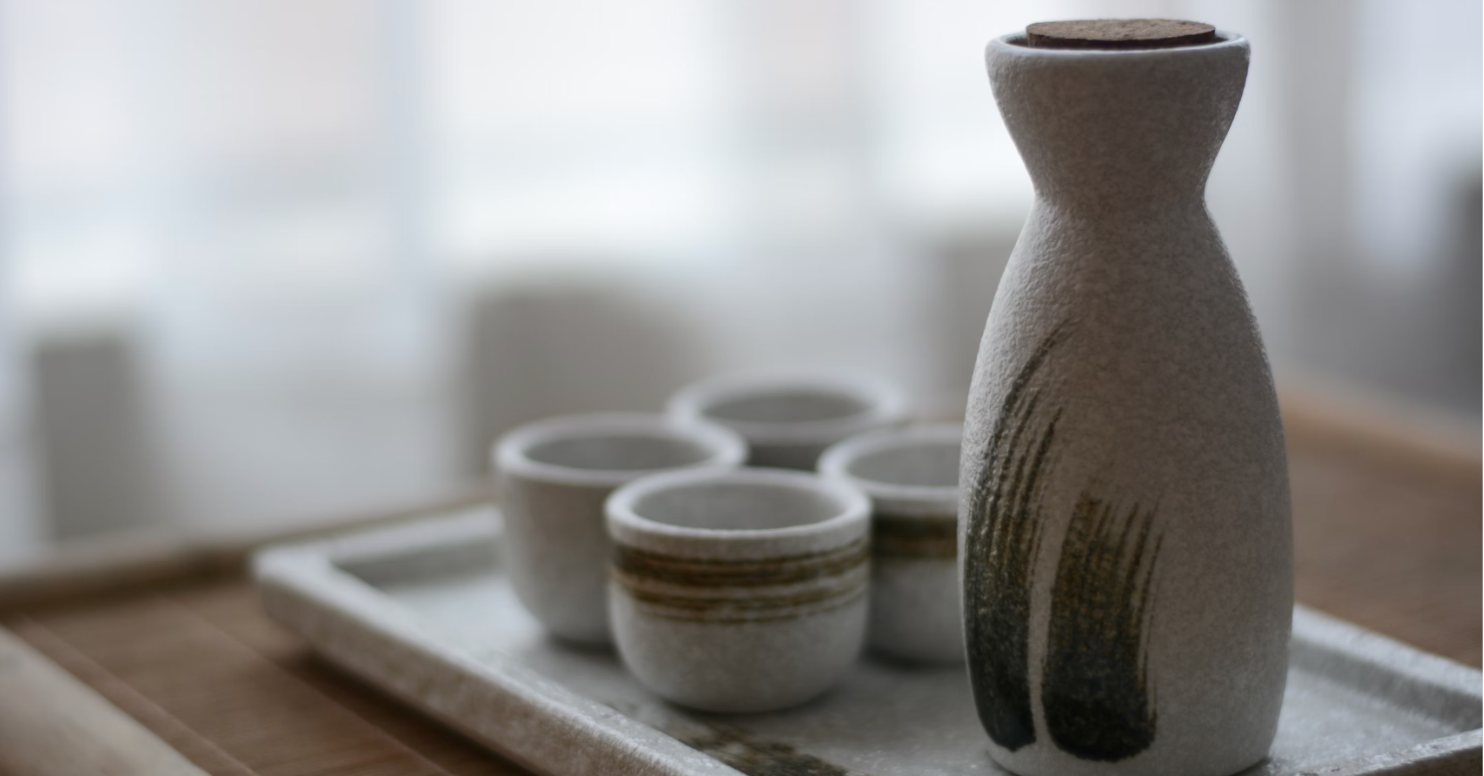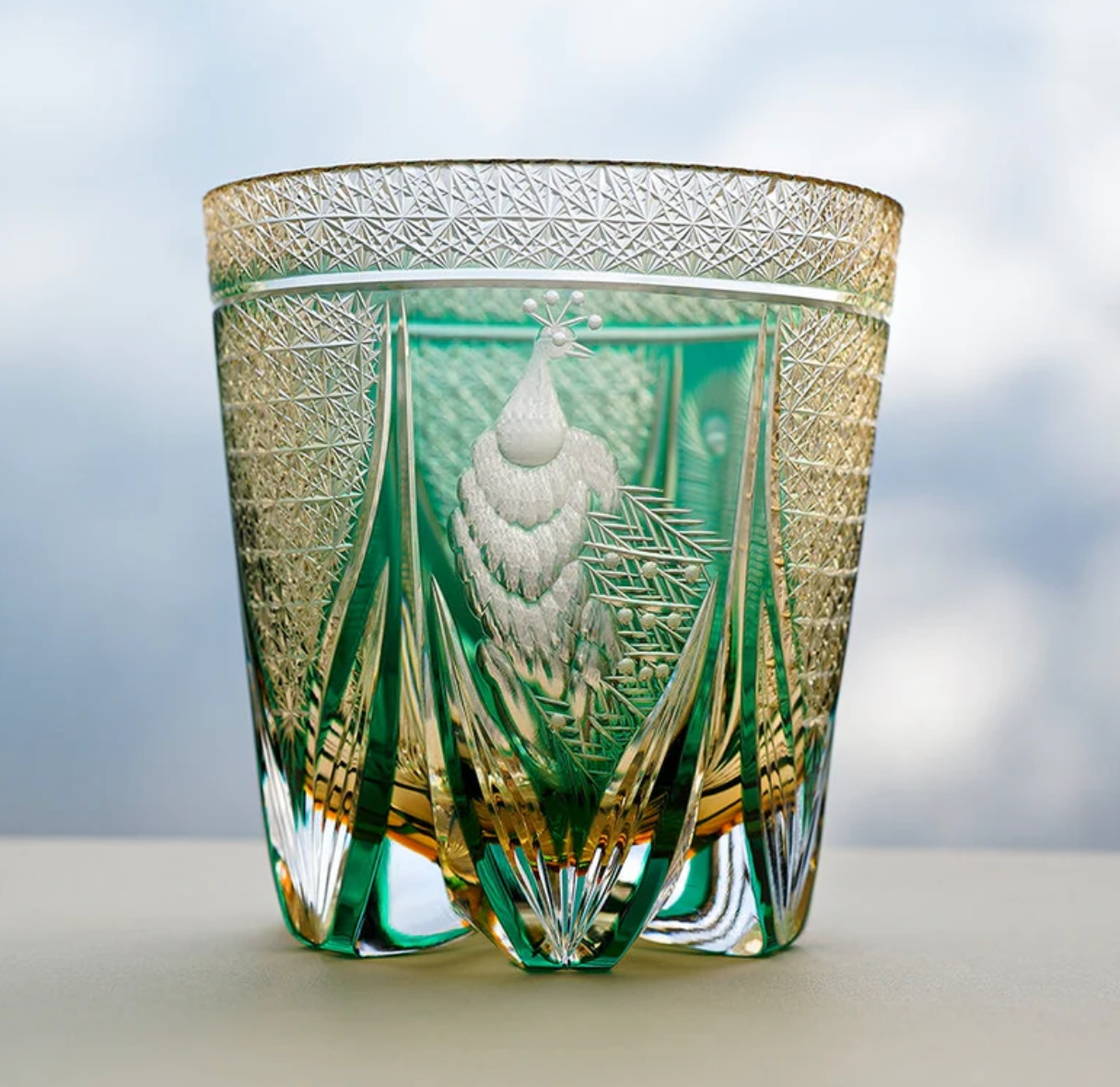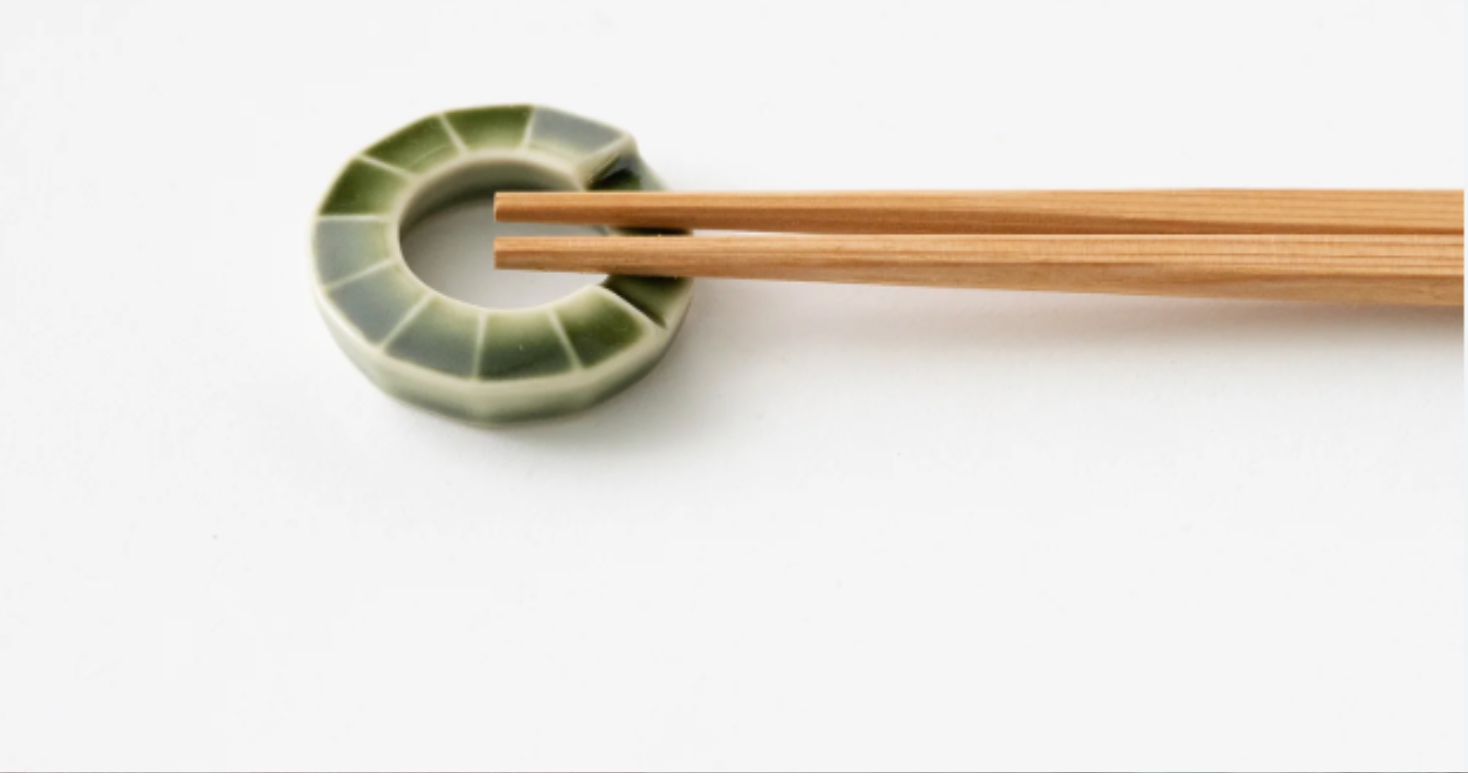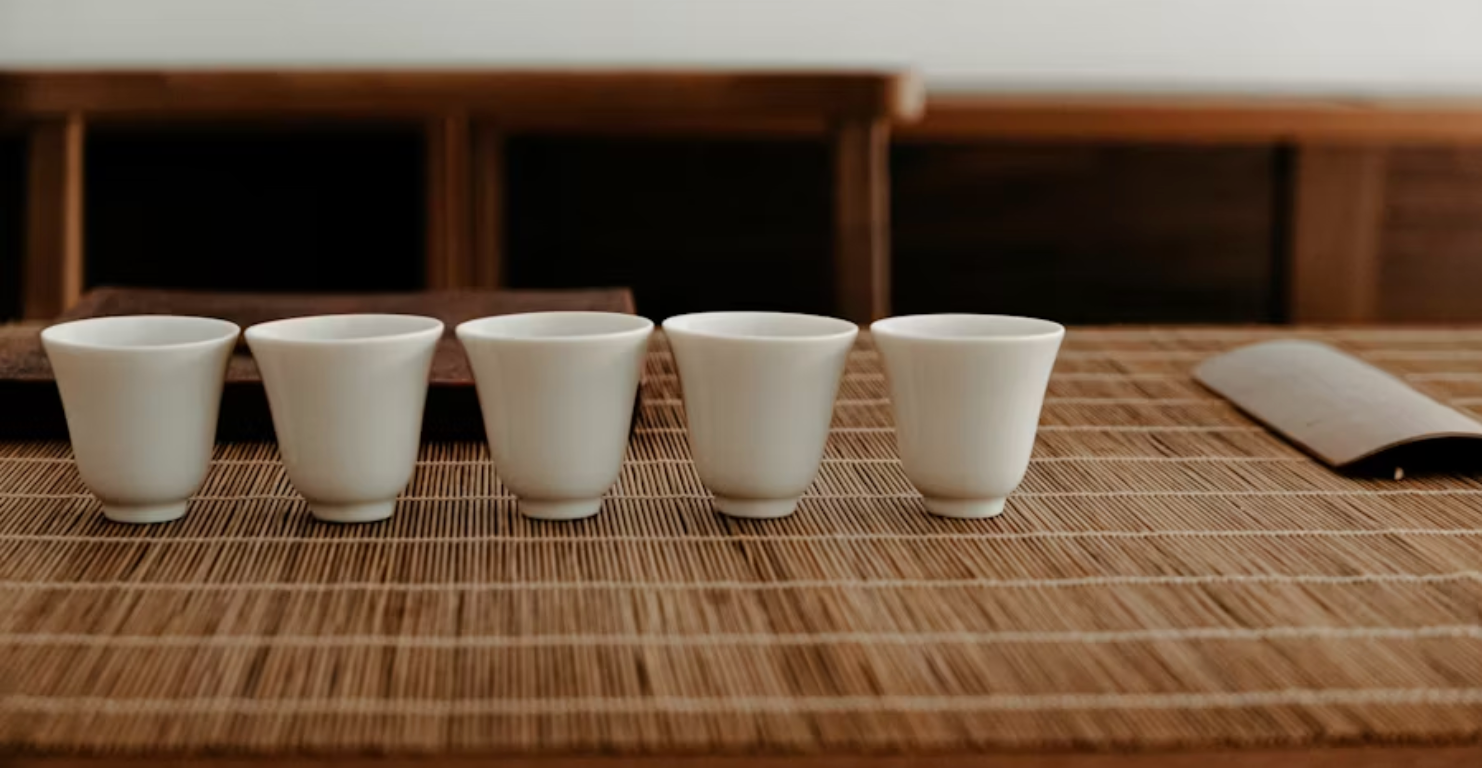
The Perfect Pour: A Connoisseur's Guide to Japanese Sake Cups (Ochoko, Guinomi, Sakazuki)
True appreciation for sake extends far beyond the brew itself; it encompasses the vessel from which it's savored. Just as a fine wine demands the perfect glass, the nuanced flavors and delicate aromas of Japanese sake are profoundly influenced by the cup it is served in. For the discerning individual, selecting the right sake cup is an essential ritual, transforming a simple drink into an elevated sensory experience. At Oriental Artisan, we invite you on a journey to understand the art of the perfect pour, guiding you through the exquisite world of Japanese sake cups.
Why the Right Sake Cup Matters
The ideal sake cup is designed to enhance several aspects of the tasting experience:
- Aroma & Flavor: The shape and rim of the cup can concentrate or dissipate the sake's delicate fragrances, influencing how its subtle notes reach your palate.
- Temperature Retention: Different materials and thicknesses affect how well the cup maintains the sake's ideal serving temperature, crucial for both chilled and warmed sake.
- Tactile Experience: The weight, texture, and feel of the cup in your hand contribute significantly to the overall enjoyment and connection to the drink.
- Aesthetic & Ritual: The beauty of the cup elevates the ceremonial aspect of drinking sake, turning it into a moment of mindfulness and appreciation.
Exploring the Primary Types of Japanese Sake Cups
While a vast array of sake ware exists, three primary styles of sake cups form the core of any connoisseur's collection:
1. Ochoko (お猪口): The Standard of Everyday Elegance
The Ochoko is arguably the most common and recognizable sake cup. It's typically small, cylindrical, or slightly flared, designed for single, focused sips.
- Description: Ranging from elegant porcelain to earthy stoneware, Ochoko are often minimalist in design, allowing the sake itself to be the star. Their small size encourages frequent refills, a gesture of conviviality in Japanese dining.
- Use: Ideal for everyday enjoyment, communal drinking, and sampling various sakes. They are versatile and widely available.
- Luxury Aspect: While common, luxury Ochoko are crafted from exquisite porcelain (like Arita ware) with delicate hand-painted designs, or feature unique glazes from celebrated kilns, making them beautiful additions to any sake set.
- Keywords: Ochoko, standard sake cup, traditional sake cup, porcelain sake cup, ceramic Ochoko.
2. Guinomi (ぐい呑み): The Artisan's Canvas
The Guinomi is a larger, more individualistic sake cup that offers incredible variety in form, material, and artistic expression. The word "guinomi" itself implies a more substantial, satisfying gulp ("gui" means gulp, "nomi" means drink).
- Description: Guinomi can range from robust, hand-thrown stoneware to refined porcelain. Their shapes vary wildly – from deep bowls to flared rims – each designed to enhance specific aromatic profiles or textures.
- Use: Perfect for individual appreciation, allowing more space for the sake's aroma to develop. They are often collected as miniature works of art.
- Luxury Aspect: Guinomi are often crafted by individual master potters, showcasing unique glazes (like the natural ash glazes of Shigaraki or the unglazed textures of Bizen), intricate hand-painting, or special clay bodies. Many are highly sought after by collectors for their distinct character and embodiment of Wabi-Sabi. An authentic Guinomi is an investment in Japanese ceramic artistry.
- Keywords: Guinomi, artisan sake cup, collectible sake cup, hand-crafted sake cup, unique sake ware, premium sake cup, ceramic Guinomi, Bizen Guinomi, Shigaraki Guinomi.
3. Sakazuki (盃): The Cup of Ceremony and Grandeur
The Sakazuki is a flat, shallow, saucer-like cup primarily used for formal occasions, ceremonial toasts, and celebratory rituals.
- Description: Often broad and shallow, allowing the sake to spread, enhancing its aromatic impact. They are frequently made from lacquer, porcelain, or metal, sometimes adorned with intricate designs, gold leaf, or auspicious motifs.
- Use: Reserved for special events such as weddings, New Year's celebrations, or formal gatherings where symbolic toasts are exchanged. Drinking from a Sakazuki is a highly ritualized act.
- Luxury Aspect: Sakazuki often exude opulence, featuring exquisite lacquer work, delicate gold leaf applications, or finely painted scenes on porcelain. Their ceremonial nature makes them highly symbolic and incredibly elegant.
- Keywords: Sakazuki, ceremonial sake cup, formal sake cup, traditional sake ceremony, lacquered Sakazuki, gold leaf sake cup, porcelain Sakazuki.
Material Matters: How Vessels Influence Flavor
Beyond shape, the material of your sake cup subtly shapes the tasting experience:
- Porcelain: Smooth, non-absorbent, and allows sake's delicate aromas to shine, often providing a crisp mouthfeel. Ideal for highly aromatic Ginjo and Daiginjo sakes.
- Ceramic/Stoneware: Offers a warmer, more textured feel. Slightly porous, it can subtly mellow bolder sakes like Junmai, allowing them to express their earthy depth. Many ceramic sake cups from specific kilns (like Hagi or Mashiko) develop a unique patina over time.
- Glass: Offers unparalleled visual clarity, allowing you to appreciate sake's subtle hues. Its neutral nature ensures no impact on flavor, making it excellent for appreciating aromatic profiles.
- Lacquer/Wood: Provides a unique warmth and lightness, with a natural, gentle feel against the lips. Ideal for more traditional or rustic sake experiences.
Matching the Cup to the Sake and Occasion
Choosing your sake cup is an art form in itself:
- For Aromatic Sakes (Ginjo, Daiginjo): Opt for wider-mouthed Guinomi or delicate porcelain Ochoko to allow the aroma to spread and be fully appreciated. Thin glass is also excellent.
- For Robust Sakes (Junmai, Kimoto): Earthy ceramic Guinomi or thicker-walled Ochoko can provide a satisfying weight and complement the sake's deeper character.
- For Warmed Sake (Kanzake): Thicker ceramic or stoneware cups retain heat better, ensuring a consistent temperature throughout the sipping experience.
- For Ceremonial Moments: The formal Sakazuki is indispensable for toasts and traditional rituals.
Collecting sake cups is a rewarding pursuit, a journey through Japanese artistry and the nuanced world of sake appreciation. Each cup becomes a story, a connection to a specific kiln, artist, or aesthetic.
At Oriental Artisan, our passion lies in connecting you with authentic, high-quality Japanese sake ware. Our curated collection features exquisite Ochoko, unique Guinomi, and ceremonial Sakazuki from celebrated kilns, crafted from a variety of materials to enhance every pour.
Elevate your sake ritual. Explore Oriental Artisan's unparalleled collection of authentic Japanese sake cups and discover the perfect vessel for your next moment of refined enjoyment.




Leave a comment
This site is protected by hCaptcha and the hCaptcha Privacy Policy and Terms of Service apply.